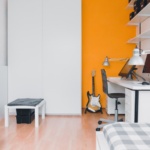A landlord’s success is dependent on having a move out checklist. It is the checklist that landlords and tenants must check the rental property at the least once per week before the tenant moves out.
Sometimes landlords may assume the property is in perfect condition, or they might be too familiar with the property to notice any wear and tear. It’s not easy to attract qualified applicants by showing empty units. Sometimes even the smallest details can make visitors leave your property.
This checklist will ensure that your rental property can meet the highest expectations. Let’s start by discussing why you need a checklist.
What’s the point in a Wear And Tear Checklist?
It is a common question: Why do I need a wear and tear list? If you plan on renting multiple properties, it is a good idea to keep a list.
To determine if there has been any damage, the landlord can also inspect the property with the tenant. All properties are subject to change. Wear These issues are often not captured and therefore not addressed when the unit’s turned over.
Wear & Tear Property Damages
Wear & Tear is the damage, injury, or loss of something that occurs during or after its use. This includes normal depreciation.
Paint can fade or peel under normal use. This is also true for wooden floors, which are walked on every day.
Let’s now look at property damage. Property damage is the loss of normal function in a rental home. It is important to remember that normal functioning may not always be possible. It can, however, be damaged.
It is more than just a gradual decline of use and wear and tear. It can also be caused accidentally, negligently, or intentionally. Damage isn’t just caused by normal wear and tear.
Have property photos
Let’s suppose you own five properties. Each property has been completely renovated to look almost identical. It can be difficult for people to keep track of so many things, especially if there are multiple properties with the same style. It is important that you have photos of your move-ins and outs.
Take photos of every property to record any damage during move-in. This will enable you to track any extra wear and tear during the tenant’s tenure.
The same steps should be followed when your tenant moves on. You should take photos of the property to identify any damages. This is a great way to make a list of damage and talk with your tenant about the cost and possible repairs.
Examples of normal wear and tears
- Peeling paint
- Grout discoloration
- Scratches in wooden floors
- Fading carpet
- Loose cabinet handles
Examples of extraordinary damages:
- Holes in walls
- Tile chipping
- Broken doors
- Cracked mirrors
- Carpet stains are hard to get rid of
Tips to reduce normal wear and tear
Maintaining your property is essential. To keep your property in top shape, you must take care of it. It’s not uncommon for appliances to break down during a rental agreement. It is crucial to maintain appliances properly.
Renters should be able to rent your property without any problems. What does this mean? Flooring made from a lower grade linoleum should be preferred to hardwood floors. Solid surface and laminate countertops are excellent options for kitchen countertops. These countertops are great for keeping kitchens elegant and clean.
This article will discuss the best materials for rental properties to make them tenant-ready.
Checklist Normal Wear And Tear
Here are some common wear and tear items to look out for. Note: these are suggestions, you should customize it to your property.
- Each carbon monoxide detector and smoke detector should be tested.
- Connect something like an alarm clock, cell phone or other device. Each outlet must be tested to make sure they are all working properly.
- Turn on all the lights to make sure they are functioning properly.
- Each window should always be checked by opening, closing, and testing each lock.
- Check that each blind is working correctly by raising and lowering them.
- You should inspect your ceilings, baseboards, walls and floors to make sure there is no flaking, holes, or scratching in the paint.
- You should inspect the door hardware of your rental unit. You can check that every door is smooth and does not stick by opening and closing them multiple times.
- You can regulate the temperature by looking at weather stripping on exterior doors.
- You can test the towel bars or toilet paper holders to ensure they are securely secured to the wall.
- You should make sure that every faucet works properly. You must ensure that your water pressure is adequate and drainage is correct. You should check the underside of your sinks for any moisture or drips.
- All toilets should be flushed and the back and base of the tank should be inspected for leaks. By opening the tank, double-check that the ballcock assembly is in good condition. Make sure the rubber flap isn’t damaged. This could lead to water seeping into the toilet.
- Every appliance should be tested to ensure that it functions properly. It is important to verify that the appliance works properly and that your tenant has not complained about it. After you have run the dishwasher one cycle, turn on each burner and oven on your stove.
- Turn on the heating/cooling system in your home. Monitor the thermostat, filters and vents.
- Check every closet for loose rods and shelving.
- You can test all railings to ensure they are in good shape.
- To inspect the landscaping, fencing, and vegetation around the property’s perimeter, you can take a walk. Be aware of any trash, abandoned or forgotten items (such as toys) or hazards such as holes, boards or nails.
- When you’re standing in front of a rental property, be aware of any unusual features. A fallen roof shingle or overgrown shrubs could be visible, as well as a broken fence rail.
- Make repairs and get rid of all your possessions. Cleaning supplies, painter’s tape and 32-ounces of painter’s tape are common items that get overlooked. You might forget to buy Diet Coke or small garbage pieces, as well as a toolbox.
It’s time you started checking
These issues can be resolved between tenants. These issues can be fixed between tenants, saving you time and money. Even the most picky applicants won’t find anything to complain about. Maintenance will become a priority in the next year.









